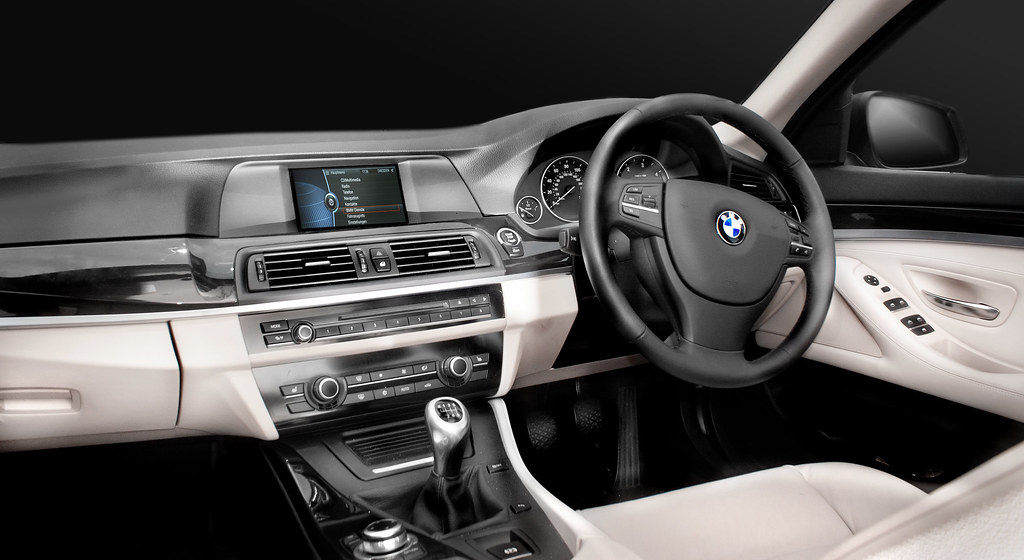
Driving on a scorching summer day, the last thing you want is for your car’s AC to suddenly stop working. It’s a common issue that can leave you feeling frustrated and sweaty, turning what should be a comfortable commute into an uncomfortable ordeal. When your car’s AC fails, it can be a real inconvenience, especially if you rely on it for a comfortable ride, affecting everything from daily commutes to long road trips.
In our extensive experience analyzing automotive systems, understanding why your car’s AC might have stopped working suddenly is the first step toward effective troubleshooting and repair. This article aims to equip consumers with comprehensive, unbiased insights into the most common reasons behind AC failures. We’ll delve into the mechanics, symptoms, causes, and potential fixes, empowering you to make informed decisions, whether you’re attempting a DIY inspection or consulting a professional mechanic.
Our goal is to provide practical and actionable information, free from commercial influence, making complex topics accessible. By thoroughly examining each potential culprit, from refrigerant leaks to electrical faults, we hope to demystify the intricacies of your car’s cooling system. This detailed guide will serve as an authoritative and trustworthy resource, ensuring you comprehend the root causes of AC problems and can effectively communicate with service providers, potentially avoiding unnecessary expenses.

1. **Refrigerant Loss/Leaks**One of the most prevalent causes of a sudden AC failure is a refrigerant leak. The AC system operates on a closed-loop refrigerant system, circulating a chemical compound, often called Freon, which absorbs and releases heat to cool the air inside the vehicle. When this system develops a leak, the refrigerant can escape, leading to a noticeable decline in cooling efficiency. This can manifest as your AC blowing warm air or simply not cooling the car as effectively as it once did.
These leaks generally occur due to wear and tear over time, affecting components like worn seals at connections, damaged hoses, or cracked lines. Physical damage from road debris or accidents, or even corrosion from environmental exposure, can also lead to breaches in the system. The refrigerant is kept under high pressure, so even a small leak can eventually lead to a complete loss of the essential cooling agent, often going undetected until the AC performance significantly degrades.
Identifying a refrigerant leak often involves observing specific signs. You might detect a hissing sound near the AC lines, indicating gas escaping under pressure. An oily residue around hoses and fittings can also signal a leak, as the refrigerant oil can sometimes escape with the gas. If you suspect a leak, a common diagnostic method involves adding a special UV dye to the AC system; the dye will glow under a UV light, pinpointing the exact location of the leak, especially if it isn’t immediately obvious. Once detected, the damaged component, whether a seal, hose, or a major part like the condenser or evaporator, must be repaired or replaced.
After the leak is addressed, a qualified service center can evacuate the old refrigerant and any moisture from the system, then recharge it with new refrigerant. The system should be checked and recharged by a qualified mechanic with the proper equipment every 6-7 years as a preventative measure. While some commercial products claim to stop leaks in condensers, evaporators, hoses, and gaskets, their long-term effectiveness can vary, and professional repair remains the most reliable solution.

2. **Low Refrigerant Levels**Closely related to refrigerant leaks, low refrigerant levels can also severely impact your car’s AC performance. While a significant leak causes a rapid loss, minor leaks or even improper servicing can gradually deplete the refrigerant over time, leading to insufficient coolant in the system. The AC system requires a precise amount of refrigerant to operate efficiently, and any deviation from this optimal level can compromise its ability to cool effectively.
Symptoms of low refrigerant levels often include the rapid cycling (on/off) of the AC compressor, as the system struggles to maintain adequate pressure, causing it to engage and disengage frequently. Another telltale sign can be the presence of frost on the AC lines, which indicates that the refrigerant is expanding too rapidly or reaching excessively low temperatures due to insufficient volume within the system. You might also notice a gradual decrease in cooling performance, where the air from your vents isn’t as cold as it used to be, or the system takes longer to cool the cabin.
Low refrigerant levels are typically a symptom of minor leaks that have gone unnoticed or inadequate maintenance practices, such as not checking refrigerant levels during routine servicing. The underlying cause is almost always a slow leak rather than the refrigerant simply ‘evaporating’ or being ‘used up’. Addressing this involves identifying and sealing these small leaks, which can be done using a UV dye kit as mentioned earlier. Once any leaks are rectified, the system should be refilled with the correct type of refrigerant, whether it’s R-134a or the newer R-1234yf, after ensuring all moisture has been cleared from the system.
It is crucial to have refrigerant levels checked and topped up as needed during annual inspections. Low refrigerant can lead to poor cooling performance and potential damage to the compressor due to increased strain. While adding refrigerant yourself is possible with kits, accurately diagnosing the leak and evacuating the system of moisture and air before recharging is best left to a professional to ensure the system’s longevity and efficiency.
Read more about: Car AC Not Blowing Cold? Diagnose and Fix These 12 Common Automotive Issues for a Cooler Ride
3. **Refrigerant Blockage**Beyond just leaks or low levels, the flow of refrigerant within the AC system can be severely hampered by blockages. These internal obstructions prevent the refrigerant from circulating freely, disrupting the crucial cycle of evaporation and condensation that enables cooling. When the refrigerant cannot move through the system as intended, the AC’s ability to absorb and dissipate heat is significantly compromised, leading to a noticeable drop in performance.
Signs of a refrigerant blockage can include uneven cooling, where some vents might blow warmer air than others, indicating an inconsistent distribution of cooling. Another clear signal is high-pressure readings on diagnostic gauges, particularly on the high-pressure side of the system, which suggests a bottleneck where refrigerant is backed up. Sluggish AC performance, where the system struggles to cool the cabin despite seemingly running, is also a common complaint when blockages are present, often signaling system strain.
Refrigerant blockages generally occur due to pinched lines, which can happen during previous repairs or due to physical stress on the hoses. They can also be caused by clogged orifice tubes or defective expansion valves. These components play a critical role in regulating refrigerant flow and pressure, and debris buildup or internal component wear over time can impede their function. This debris can sometimes be metal shavings from a failing compressor, desiccant material from a failing drier, or other foreign particles introduced during improper servicing.
To fix a refrigerant blockage, the specific clogged component must be replaced. This often means replacing the clogged orifice tube or expansion valve. After replacing the faulty part, it is essential to flush the entire system with nitrogen to remove any remaining debris or contaminants that might cause future blockages. Monitoring pressure during annual checks is a good preventative measure, helping to identify potential blockages early. This complex repair requires specialized tools and expertise, making professional diagnosis and repair highly recommended to ensure thorough cleaning and proper system function.
Read more about: Car AC Not Blowing Cold? Diagnose and Fix These 12 Common Automotive Issues for a Cooler Ride

4. **Worn or Broken Serpentine Belt**The serpentine belt is a critical component that drives various accessories on your engine, including the air conditioning compressor. Some cars have a specific belt that only connects to the AC compressor, while others utilize one main belt that drives all accessories, such as power steering, alternator, and water pump, in addition to the AC. If this belt is worn, loose, or broken, it directly impacts the AC compressor’s ability to operate, leading to a complete cessation of cooling.
Serpentine belt issues generally occur due to the natural wear and tear of the belt over time, causing it to develop cracks, fray, or become brittle. Improper tension, whether too loose or too tight, can also accelerate wear or lead to slippage. Pulley misalignment can likewise contribute to premature belt failure. When the belt loses its ability to turn the AC compressor efficiently or breaks entirely, the compressor cannot pressurize the refrigerant, resulting in warm air from the vents.
Recognizing a worn or broken serpentine belt is usually straightforward. A distinct squealing noise emanating from the engine bay, particularly when starting the car or turning the AC on, is a common indicator of a slipping belt. Beyond AC failure, you might also experience the failure of other systems that rely on the same belt, such as a loss of power steering assist or a battery not charging. A visual inspection of the belt can reveal cracks, missing ribs, or excessive wear, signaling that it needs attention.
Fixing this issue involves swapping out the worn or broken belt for a manufacturer-approved replacement. While replacing a serpentine belt can be a DIY task on some vehicles, it may require some effort, as some belts are located behind other accessories that need to be temporarily removed. It’s crucial to ensure proper tension when installing the new belt, often by using a torque wrench, and to check pulley alignment to prevent future issues. This simple repair, though sometimes laborious, is vital for the proper functioning of not only your AC but also other essential engine accessories.
Read more about: Decoding Your Car’s Cries: A Popular Mechanics Guide to Diagnosing Strange Noises, From Squeaks to Knocks

5. **Faulty Compressor Clutch**The AC compressor, the “heart” of your car’s cooling system, is driven by the engine’s serpentine belt. However, the connection isn’t always direct. Many AC compressors utilize a clutch mechanism that engages to transmit power from the belt-driven pulley to the compressor itself. This clutch is designed to engage when the AC is turned on, allowing the compressor to build pressure in the system, and disengage when cooling is not required, reducing engine load. If this clutch wears out or malfunctions, it will no longer transmit power effectively, preventing the compressor from running and thus halting the AC system.
Compressor clutch failures generally occur due to constant wear from repeated engagement and disengagement over the years. Debris contamination, such as dirt or metal shavings, can also interfere with its operation, leading to premature wear. Electrical issues, such as a faulty clutch coil, which is responsible for creating the magnetic field that engages the clutch, can also prevent it from activating. Overuse and poor maintenance practices can accelerate the deterioration of the clutch components, leading to a sudden AC stop.
Symptoms of a faulty compressor clutch include a clicking or grinding noise when you attempt to turn on the AC, often indicating that the clutch is struggling to engage or is seizing. The most obvious sign is the compressor failing to engage altogether, even when the AC button is pressed; you won’t hear the characteristic “click” and the compressor pulley will spin freely without turning the compressor shaft. Without the compressor engaging, the system cannot pressurize the refrigerant, and only warm air will blow from the vents.
Fixing a faulty compressor clutch can sometimes involve replacing just the clutch assembly, which requires removing the pulley and the large fastener holding the clutch onto the compressor. Some compressors even have shims between the clutch and the compressor shaft that can be removed to increase contact, potentially buying a little more time with the current clutch. However, many newer cars utilize variable AC compressors that do not have a separate clutch, meaning the entire compressor unit must be replaced if it fails. Inspecting the clutch with a removal tool, cleaning it if debris is present, or replacing the clutch coil or the entire compressor if damaged are the typical steps involved. This repair, particularly the replacement of the entire compressor, requires evacuating and recharging the AC system, which should be performed by a qualified mechanic.
Read more about: Owner’s Watch List: The Luxury SUVs That Become Costly Repair Nightmares After Seven Years

6. **Insufficient or Incorrect Oil**Just like your engine, your car’s AC compressor requires proper lubrication to function efficiently and prevent premature wear. The refrigerant oil circulates with the refrigerant throughout the AC system, ensuring that the compressor’s internal components, such as bearings and seals, remain adequately lubricated. If there is an insufficient amount of oil, or if the incorrect type of oil is used, it can lead to severe compressor damage and, ultimately, AC failure.
Insufficient or incorrect oil levels generally occur due to refrigerant leaks, as some oil can escape with the refrigerant, or due to improper servicing. Using the wrong type of oil, such as a non-PAG oil when a PAG oil is specified, can also cause problems because different refrigerants require specific oil types for compatibility and performance. These issues can lead to increased friction within the compressor, causing it to overheat, seize, or experience accelerated wear of its critical internal components, significantly shortening its lifespan.
Signs of insufficient or incorrect oil often manifest as unusual humming or seizing noises coming from the compressor. You might hear increased friction sounds, indicating that metal components are rubbing without adequate lubrication. If the compressor seizes, it will fail to engage, resulting in no cold air from the vents. These symptoms are clear indicators that the compressor is under stress and that the lubrication system is compromised, which can lead to catastrophic compressor failure if not addressed promptly.
To fix this issue, the system typically needs to be evacuated of all old refrigerant and oil. Then, it must be refilled with the correct type and amount of PAG or ester oil, depending on the refrigerant and vehicle specifications. During this process, technicians will check for any underlying leaks with a pressure test, as leaks are a common reason for oil loss. Verifying oil levels during routine AC maintenance is a critical preventative measure that can help prevent compressor seizing and extend the life of your AC system. This is a job best handled by a professional mechanic, as it requires specialized equipment for evacuation and precise measurement of oil and refrigerant.
Read more about: Owner’s Group Chatter: 11 Critical Sensors That Allegedly Go Kaput on Used Cars Before You Hit the Big 5-0

7. **Electrical Issues**The intricate network of electrical components in your car plays a crucial role in the operation of the AC system. From the moment you press the AC button to the compressor engaging, electrical signals and power flow through various switches, relays, and wiring. Any disruption in this electrical flow can prevent the AC system from turning on, engaging the compressor, or functioning correctly, leading to a sudden and frustrating stop to your cooling.
Electrical issues generally occur due to blown fuses, which protect circuits from overcurrent; faulty relays, which act as electrical switches; or damaged wiring. Corrosion on terminals, general wear and tear over time, or electrical shorts can all contribute to these failures. Components like the AC control unit, pressure switches, and condenser fan relays are all susceptible to electrical faults. For instance, a faulty pressure switch, designed to monitor system pressure, can prevent the compressor from engaging if it detects a problem or goes bad, even if there’s no actual pressure issue.
Symptoms of electrical issues often include no response when turning on the AC system. If the AC fuse is blown, there will be a definite power disruption to the compressor, leading to no cooling. A check engine light (CEL) might illuminate in newer cars if a pressure switch goes bad, though older cars may not provide such a clear indicator. Faulty wiring can disrupt the electrical flow, and a malfunctioning control unit might fail to send the necessary signals for the compressor or fans to turn on, resulting in warm air or no air conditioning at all.
Troubleshooting electrical issues begins with checking the AC fuse in the fuse box. If the fuse is blown, replacing it is a straightforward DIY fix, but it’s important to investigate why it blew in the first place, as it could indicate a larger electrical problem. For relays or wiring, a technician should test connections with a diagnostic scanner and a multimeter to verify voltage and continuity. Components like pressure switches can be diagnosed with a multimeter to check voltage between terminals. Once the faulty electrical component—be it a fuse, relay, wiring, pressure switch, or even the AC control unit—is identified, it can be repaired or replaced to restore the AC’s proper functioning. Given the complexity of vehicle electrical systems, professional diagnosis is often recommended to accurately pinpoint and resolve such issues safely.
Read more about: Rev Up Your Restoration: The Ultimate Guide to the Best Free Online Forums for Classic Car Enthusiasts

8. **Physical Damage**Physical damage to your car’s AC components can unexpectedly bring your cooling system to a halt. Visible signs such as dents, cracks, or corrosion on critical parts like the compressor or AC lines often indicate a problem. These issues can arise suddenly, perhaps after an accident, or develop subtly over time from environmental exposure, making consistent performance unpredictable.
Such physical damage generally occurs due to impacts from accidents or encounters with road debris. Components frequently exposed to external elements, like the AC condenser typically situated in front of the radiator, are particularly vulnerable to these unforeseen stressors. Even seemingly minor impacts can compromise the integrity of the delicate fins or internal tubing.
Environmental corrosion also plays a significant role in physical damage. Exposure to harsh conditions, particularly road salt in colder climates, or prolonged humidity, can accelerate material degradation. This leads to weakened connections, pitting on metal surfaces, or even outright breaches in the system, which eventually fail under pressure.
The repercussions of physical damage are significant, often leading to immediate refrigerant leaks or mechanical failures within the system. For instance, a cracked AC line will allow refrigerant to escape, causing a rapid decline in cooling performance and potential damage to the compressor running without adequate lubricant. Similarly, damage to the compressor itself can impede its ability to pressurize the system, resulting in a complete loss of air conditioning function.
To effectively address physical damage, a thorough evaluation is necessary to pinpoint the exact affected components and the extent of the damage. This often involves replacing compromised parts, such as the entire compressor or damaged AC lines. Ensuring proper installation and using specialized alignment tools is crucial to guarantee that new components fit correctly, maintain system integrity, and function optimally within the existing AC infrastructure, thereby restoring its essential cooling capabilities.
Read more about: The F-22 Raptor’s Resurgence: A Deep Dive into America’s Evolving Stealth Super Fighter

9. **Contaminants**The presence of contaminants within your car’s AC system can severely hinder its performance, often manifesting through noticeable and unpleasant symptoms. A persistent musty odor emanating from the vents is a clear signal of microbial growth or debris accumulation, indicating a need for intervention. Additionally, a reduced airflow through the system strongly suggests that internal pathways are clogged or components are corroded, impairing the AC’s overall efficiency.
Contaminants generally enter the AC system due to various factors, including the ingress of moisture, dust, or other environmental debris. This unwanted material can find its way in through undetected leaks in the system’s seals or hoses, or it can be a direct result of poor maintenance practices. Neglecting routine cabin air filter changes or leaving the AC system open during repairs without proper sealing can introduce foreign particles, which then circulate and accumulate.
Once inside, these contaminants can cause significant issues by clogging vital components such as the expansion valve or orifice tube, disrupting the crucial refrigerant flow. Moisture, in particular, poses a severe threat as it can react with refrigerant to form corrosive acids, leading to internal component corrosion and premature failure over time. Such blockages and corrosion compromise the system’s ability to absorb and dissipate heat effectively.
Visible contamination, such as a severely dirty cabin air filter, is a clear indication that the air entering your vehicle’s cabin is not being adequately filtered. This can lead to reduced air quality, impacting passenger comfort and potentially exacerbating allergies. An excessively dirty filter also restricts the volume of air that can pass through the evaporator, reducing cooling capacity.
Rectifying contaminant issues often involves replacing the cabin air filter, ideally with a high-efficiency particulate air (HEPA) filter, a task many consumers can perform themselves. For internal system contaminants, a qualified mechanic must flush the entire AC system with nitrogen to thoroughly clear any debris, moisture, or corrosive residue. Regular filter changes, recommended every 12,000 miles, are a crucial preventative measure to safeguard system health.
Read more about: Unleash Your Inner Mechanic: 15 Essential DIY Car Hacks to Save a Fortune on Maintenance
While this guide provides detailed insights into diagnosing these problems, fixing your car’s AC compressor is generally not a task for the untrained individual. We strongly recommend consulting a professional car workshop. Experienced technicians can leverage their seasoned expertise to accurately locate the issue and implement effective repairs, saving you the hassle and potential for further damage. In some cases, replacing the entire unit may be the most pragmatic solution, a recommendation best considered when made by a trusted professional. The 9 common reasons discussed here, along with their respective fixes, offer a generalized overview, and specific remedies may vary across different auto brands. Therefore, relying on professional repair remains the most reliable approach to ensure your AC compressor functions optimally and efficiently, keeping you cool on the road.




